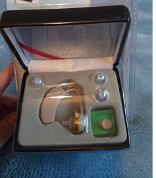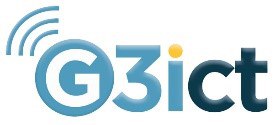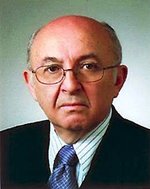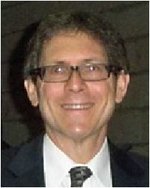Let Us Talk About Safe Listening with Personal Sound Amplifiers
Posted on August 24, 2020

President at European Federation of Hard of Hearing People and Vice Chairman of ITU JCA-AHF
(This blog has been jointly written by Lidia Best, Vice Chair of ITU Joint Coordination Activity on Accessibility and Human Factors (JCA-AHF)/ Member of G3ict delegation to ITU/ Member of “Make Listening Safe Workgroup” and Mark Laureyns, Co-chair of the World Hearing Forum “Make Listening Safe Workgroup”/ President of AEA/ Lecturer at Thomas More University College in Antwerp/ Member of G3ict delegation to ITU)
The ‘Make Listening Safe workgroup’ is an initiative of The World Health Organization (WHO) in the framework of the World Hearing Forum and is committed to creating a world where nobody’s hearing is put in danger due to unsafe listening.
New ITU standard recommendation H.871 addressing safety of personal sound amplifiers and sound amplification apps was presented by the Make Listening Workgroup during last month World Summit of Information Society Forum (WSIS).
Personal sound amplifiers (PSAP’s) are readily available to consumers, they are strange enough only intended for people with normal hearing and are not registered as medical devices.

Since PSAPs can look remarkably similar to hearing aids, and some hard of hearing people, who didn’t see the difference between hearing aids and personal sound amplifiers, started using these devices. Therefore, the European Federation of Hard of Hearing People (EFHOH), requested the European Association of Hearing Aids Professionals (AEA) in 2015 to check if these devices were safe. The testing resulted in a joined EFHOH-AEA publication paper on the potential risk of using “Personal Sound Amplification Products” PSAPs’ in which 27 personal amplifiers were analysed. All devices had a maximum output level of more than 120dB, 23 exceeded 125dB and eight even 130dB*.And none of these PSAP’s had the option to limit the maximum loudness level.
Why is this unsafe?
To avoid the risk of permanent hearing damage, according to the WHO-ITU Safe Listening Standards H870 and H871, one can only be exposed for 15 seconds/week to sound with a loudness level of 120dB, for 4 seconds/week to 125 dB and even less than 2 seconds/week to 130dB**. It is clear, that a personal amplifier is not intended to be only used 15 seconds or less per week.
The report was presented to the European Commission in December 2015 and to the Food and Drug Administration (FDA) in the US in April 2016. For more information about current standards please follow recent article in ENT and Audiology news
All those actions resulted in international recommendations which can be used as a guidance for manufacturers, retailers, and consumers by providing independent and verified information. It is the dedications of many experts and individuals that we owe existence of new standard aiming at wellbeing and safety of consumers of electronics.
The main recommendations from ITU H.871 are:
1. For PSAs with the capacity to measure weekly dose, it is required that weekly maximum sound dose needs to be less than 1.6 Pa²h, which corresponds to 80dBA for 40 hours.
2. For PSA’s which do not have the capacity to measure weekly sound dose, the maximum output of the device needs to be permanently limited to 95dBA; a user then is unlikely to use the device at a level higher than 80dBA since the dynamic range of speech has a crest factor of 12 to 17dB and PSA’s need to provide adequate warnings.
The next step is for manufacturers of those devices to adapt their products to new recommendations and for civil society, consumer organisations to inform end users of the dangers unsafe listening practices can have on their hearing.
*For the report, the PSAPs were analysed according to the IEC 60118-7 test-standard and the levels were expressed in dBSPL.
**The WHO-ITU standards refer to 1.6 Pa²h, which corresponds to 80dBA for 40 hours.
References:
- EU Noise at Work Regulations “on the minimum health and safety requirements regarding the exposure of workers to the risks arising from physical agents (noise) (Directive 2003/10/EC)
- IEC 62368-1 on Audio/video, information, and communication technology equipment Part 1: Safety requirements - IEC (International Electrotechnical Commission)
- ITU-T H.870 “Guidelines for safe listening devices/systems”- ITU (International Telecommunication Union)
- AEA-EFHOH joint paper on the potential risk of using “Personal Sound Amplification Products” PSAPs https://www.aea-audio.org/port...
- ANSI/CTA-2051 - ANSI/CTA Standard - Personal Sound Amplification Performance Criteria – CTA (Consumer Technology Association)
- ITU-T H.871 “Safe listening guidelines for personal sound amplifiers”- ITU (International Telecommunication Union)





























